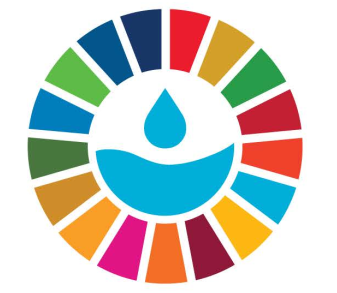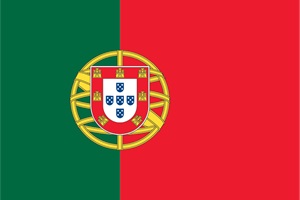Promoting ocean and water literacy in school communities (ProBleu)
Earthwatch and CSIC
(
Non-governmental organization (NGO)
)
#SDGAction51774
Description
- To mobilise and engage students and school communities in relation to the EU mission “Restore our Ocean and Waters by 2030” across the EU and the associated countries.
- To improve the understanding of and enhance the sense of stewardship towards the value and challenges of oceans and waters among children, youth and teachers.
- To grow the Network of European Blue Schools, bringing ocean and water literacy into the classroom across the EU and in the Associated countries.
- To mobilise and engage the wider community with the Network of European Blue Schools activities, and communicate the results of project actions towards the Mission objectives, sustaining the Network’s growth.
- Increased mobilisation and engagement of children and youth in primary and secondary schools across the EU and in the Associated countries in the implementation of Mission objectives.
- Student and school projects implementing the Mission objectives and engaging and mobilising students, teachers and schools in the pursuit of ocean and water literacy, sustainability and Mission objectives, that at the same time contribute to the growing Network of European Blue Schools established under the EU4Ocean Coalition for Ocean Literacy.
- Increased ocean and water literacy among children and youth, teachers and schools, improved understanding of the value of ocean and waters and enhanced sense of responsibility among the youth and teachers towards this planet and its boundaries.
- Ramp up accreditation of schools in the Network of European Blue Schools and engagement in their related activities, based on methodologies of Open Schooling, engaging with the community and communicating the results of their projects and in the implementation of Mission objectives and bring the ocean and water into the classroom at the EU- and Associated countries level.
- Consejo Superior de Investigaciones Cientificas
- Earthwatch
- Kaunas University of Technology
- INOVA+ - Innovation Services, S.A.
- Plymouth Marine Laboratory
- National Marine Aquarium (Ocean Conservation Trust)
SDGS & Targets
Goal 4
Ensure inclusive and equitable quality education and promote lifelong learning opportunities for all
4.1
By 2030, ensure that all girls and boys complete free, equitable and quality primary and secondary education leading to relevant and effective learning outcomes
4.1.1
Proportion of children and young people (a) in grades 2/3; (b) at the end of primary; and (c) at the end of lower secondary achieving at least a minimum proficiency level in (i) reading and (ii) mathematics, by sex
4.1.2
Completion rate (primary education, lower secondary education, upper secondary education)
4.2
By 2030, ensure that all girls and boys have access to quality early childhood development, care and pre-primary education so that they are ready for primary education
4.2.1
Proportion of children aged 24–59 months who are developmentally on track in health, learning and psychosocial well-being, by sex
4.2.2
Participation rate in organized learning (one year before the official primary entry age), by sex
4.3
By 2030, ensure equal access for all women and men to affordable and quality technical, vocational and tertiary education, including university
4.3.1
Participation rate of youth and adults in formal and non-formal education and training in the previous 12 months, by sex
4.4
By 2030, substantially increase the number of youth and adults who have relevant skills, including technical and vocational skills, for employment, decent jobs and entrepreneurship
4.4.1
Proportion of youth and adults with information and communications technology (ICT) skills, by type of skill
4.5
4.5.1
Parity indices (female/male, rural/urban, bottom/top wealth quintile and others such as disability status, indigenous peoples and conflict-affected, as data become available) for all education indicators on this list that can be disaggregated
4.6
By 2030, ensure that all youth and a substantial proportion of adults, both men and women, achieve literacy and numeracy
4.6.1
Proportion of population in a given age group achieving at least a fixed level of proficiency in functional (a) literacy and (b) numeracy skills, by sex
4.7
By 2030, ensure that all learners acquire the knowledge and skills needed to promote sustainable development, including, among others, through education for sustainable development and sustainable lifestyles, human rights, gender equality, promotion of a culture of peace and non-violence, global citizenship and appreciation of cultural diversity and of culture’s contribution to sustainable development
4.7.1
Extent to which (i) global citizenship education and (ii) education for sustainable development are mainstreamed in (a) national education policies; (b) curricula; (c) teacher education and (d) student assessment
4.a
Build and upgrade education facilities that are child, disability and gender sensitive and provide safe, non-violent, inclusive and effective learning environments for all
4.a.1
Proportion of schools offering basic services, by type of service
4.b
4.b.1
Volume of official development assistance flows for scholarships by sector and type of study
4.c
By 2030, substantially increase the supply of qualified teachers, including through international cooperation for teacher training in developing countries, especially least developed countries and small island developing States
4.c.1
Proportion of teachers with the minimum required qualifications, by education level
Goal 6
Ensure availability and sustainable management of water and sanitation for all
6.1
By 2030, achieve universal and equitable access to safe and affordable drinking water for all
6.1.1
Proportion of population using safely managed drinking water services
6.2
By 2030, achieve access to adequate and equitable sanitation and hygiene for all and end open defecation, paying special attention to the needs of women and girls and those in vulnerable situations
6.2.1
Proportion of population using (a) safely managed sanitation services and (b) a hand-washing facility with soap and water
6.3
By 2030, improve water quality by reducing pollution, eliminating dumping and minimizing release of hazardous chemicals and materials, halving the proportion of untreated wastewater and substantially increasing recycling and safe reuse globally
6.3.1
Proportion of domestic and industrial wastewater flows safely treated
6.3.2
Proportion of bodies of water with good ambient water quality
6.4
6.4.1
Change in water-use efficiency over time
6.4.2
Level of water stress: freshwater withdrawal as a proportion of available freshwater resources
6.5
By 2030, implement integrated water resources management at all levels, including through transboundary cooperation as appropriate
6.5.1
Degree of integrated water resources management
6.5.2
Proportion of transboundary basin area with an operational arrangement for water cooperation
6.6
6.6.1
Change in the extent of water-related ecosystems over time
6.a
6.a.1
Amount of water- and sanitation-related official development assistance that is part of a government-coordinated spending plan
6.b
Support and strengthen the participation of local communities in improving water and sanitation management
6.b.1
Proportion of local administrative units with established and operational policies and procedures for participation of local communities in water and sanitation management
SDG 14 targets covered
Deliverables & Timeline
Handbook for co-creating Blue School activities for impact
Evaluation, adaptation and improvement of Blue School guidance
Data-collection and citizen-science tools for education on oceans and freshwater
Resources mobilized
Partnership Progress
Feedback
Action Network

Timeline
Entity
Region
- Europe
Other beneficiaries
The EU and the associated countries
More information
Countries



Contact Information
Luigi, Dr

